DashClicks Blog
The industry's top experts offer their best advice, research, how-tos, and insights—all in the name of helping you level-up your business and online marketing skills.
Join Us!

Top 10 Marketing and Support Tools Agencies Can’t Live Without in 2026
Agencies have always worked under pressure, but in 2025 that pressure feels heavier. Clients want results they can measure, quick turnarounds, and smoother communication than ever. Add in nonstop competition and a digital world that changes by the week, and it’s no surprise that the tools an agency uses often decide whether it thrives or just gets by.
The tricky part is choosing. There are thousands of platforms out there, each claiming to be “the one.” The agencies that stay ahead aren’t chasing every new launch, they’re building smart toolkits that keep work moving, clients happy, and teams sane.
This isn’t about trend-hopping. It’s about knowing which platforms actually save time, improve collaboration, and give clients confidence that their money’s well spent.
Here’s what agencies lean on the most in 2026.
Marketing Tools That Agencies Rely On
1. AI-Driven Content Creation Platforms
Content is still at the heart of agency work, but how it gets made has changed completely. AI tools have gone from being a novelty to a daily partner in the creative process.
Agencies now use them to spin up blog drafts, ad copy variations, or personalized content for niche audiences. The goal isn’t to push writers out, it’s to give them breathing room. Instead of staring at a blank page, they can test ideas fast, refine messaging, and focus on the parts that need a human touch.
A strategist can drop in a client’s brand voice and audience notes, then generate dozens of angles in minutes. From there, the creative team trims, sharpens, and polishes. It’s quicker, less draining, and the end product feels more on-target.
2. SEO and Analytics Suites
Search is still huge, but the rules are different now. It’s no longer about stuffing in keywords; it’s about understanding context, intent, and how AI-driven search engines serve up summaries instead of endless links.
The SEO tools agencies can’t live without now track performance across these new search formats, pull in data from multiple sources, and even flag opportunities before competitors notice them.
Here is an example of DashClicks’ Marketing Analytics Dashboard: Gives agencies a unified view of all their marketing data in one dashboard. From keyword rankings and traffic trends to channel-specific performance, everything updates in real time. The app automatically generates white-labeled reports that agencies can share with clients—offering complete transparency without hours of manual data gathering.
3. Social Media Management Dashboards
Social media has become messy with too many platforms, too much noise, and algorithms that change without warning. Add in that customers want instant answers, no matter the time of day and running accounts manually just isn’t an option anymore.
Dashboards keep everything in one place:
- Scheduling
- Engagement tracking
- Quick-read analytics
The real value, though, is in listening. These tools show agencies where conversations are happening, which posts are sparking reactions, and when a brand should jump into the mix or sit it out.
They can highlight trending issues while they’re still on the rise, so agencies can get the maximum engagement without looking like they’re following everyone else.
Many platforms now bundle in AI-powered community management. Bots handle routine replies, FAQs, and DMs, while humans step in for the more complex stuff. Agencies save hours, and clients get consistent, responsive interactions.
4. Advertising Automation Platforms
Managing paid campaigns across Google, Meta, LinkedIn, TikTok, and whatever new app pops up can feel overwhelming. That’s why automation tools have become a lifeline.
These platforms automatically adjust bids, rotate creatives, and test new audience segments. They even spot fraudulent clicks before they eat up budgets. Agencies no longer have to live inside dashboards, tweaking numbers manually. They can focus on the bigger questions like what’s working, what’s not, and where to push harder.
Clients benefit too. Instead of vague metrics, they see clear links between ads, leads, and sales. Agencies that tie campaign data directly into CRMs make attribution crystal clear, which builds trust fast.
5. CRM and Marketing Automation Integrations
Agencies aren’t just running campaigns; they’re plugged straight into their clients’ sales funnels. That’s where CRM and automation tools come in.
By connecting campaigns to pipelines, agencies can show exactly how marketing drives revenue. Every touchpoint is tracked, emails, ads, landing pages, so clients finally get the full picture.
Some agencies even give clients their own live dashboards, so they can check leads and conversions anytime. It’s not just transparency, it’s a partnership. Clients stop wondering “what are they actually doing for us?” because the results are right there on the screen.
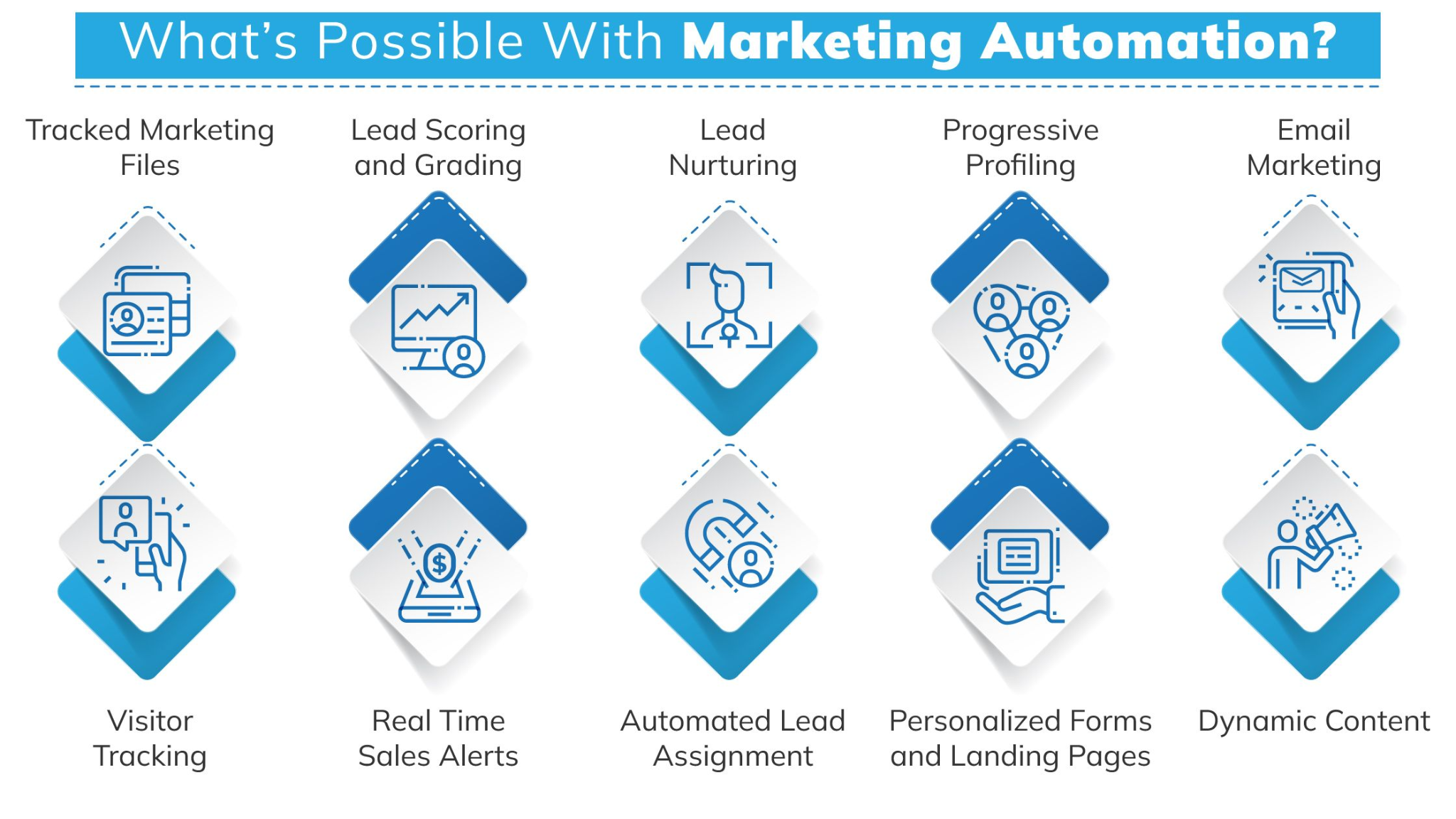
Here is an example of DashClicks’ Contact Management Software: A unified and marketing automation platform built specifically for agencies. DashClicks combines lead management, email workflows, pipeline tracking, and real-time reporting in one place. Its white-labeled client dashboards let agencies share live campaign performance, track conversions, and automate follow-ups—all under a branded interface. Instead of stitching together multiple tools, agencies can manage everything from onboarding to reporting seamlessly.
Looking for a more developer-oriented solution? Some agencies pair their CRM with transactional email services to power timely, automated messages such as sign-up confirmations, onboarding flows, and other key touchpoints that keep leads engaged throughout the customer journey.
Support Tools That Keep Agencies Running
The marketing side gets all the attention, but the support tools are what actually keep an agency running smoothly. Without them, deadlines slip, communication gets messy, and teams burn out.
6. Project Management Platforms
Agencies juggle a ridiculous amount of moving parts:
- Launch dates
- Content calendars
- Approvals
- Reporting
Without a central hub, these become chaotic to manage.
Modern project management tools do more than track tasks. They tie directly into chat apps, file storage, and client portals. A job might start as a client request, move through strategy and design, and then land back with the client for approval, all without a single confusing email thread.
That clarity keeps projects moving and saves everyone’s sanity.
Here is an example of DashClicks’ Project Management Software: Streamlines task management, file sharing, and team collaboration under one roof. Agencies can manage deliverables from campaign strategy to content approvals—all within the same ecosystem that powers their CRM and reporting tools.
7. Client Communication Hubs
Email isn’t dead, but it’s no longer the main line between agencies and clients. Secure portals and chat-based platforms have taken its place. Customer support SaaS teams use this kind of software to bring instant chat, email, direct messages, and even telephonic queries together.
These hubs also benefit clients, letting them check updates, drop comments, and find files without digging through old threads. It’s cleaner and more transparent for both sides. Some even let agencies white-label the space, so it feels like a custom platform built just for that client.
Here is an example of DashClicks’ White Label Client Dashboard: Replaces scattered email threads with a single space for updates, campaign reports, and real-time communication. Clients can log in anytime to view performance metrics, upload files, or leave feedback—while agencies maintain full brand control and visibility.
8. Knowledge Bases and Support Libraries
Clients often ask the same questions about timelines, billing, or reports. Instead of repeating themselves, agencies now point them to self-serve libraries packed with FAQs, short videos, and walkthroughs.
This doesn’t cut out the human touch, it just frees account managers to focus on deeper conversations. And clients like being able to solve small questions instantly without waiting for an email back.
9. Time Tracking and Resource Allocation Tools
Agencies run on hours and capacity. If they don’t track both carefully, profitability goes out the window.
Modern time-tracking tools do more than just log hours. They help managers see workloads at a glance, flag burnout risks, and suggest better task allocation. A creative director might notice one designer is slammed while another has room, then shift things before deadlines slip.
The leadership team also gets clearer data for pricing, hiring, and forecasting. Not glamorous, but essential.
10. Financial and Proposal Software
Proposals, invoices, and financial reports used to eat up way too much time. By 2025, most agencies rely on tools that package all of it into one flow.
Clients see polished proposals and simple billing options. Agencies stop chasing down late payments. Some tools even forecast revenue months ahead, giving leaders the confidence to hire or scale services at the right time.
Here is an example of DashClicks’ Billing Software: Simplifies client proposals, contracts, and invoices within the same dashboard used for campaign management. Agencies can send branded proposals, track approvals, and automate billing—all linked directly to client projects and CRM pipelines.
It’s the mundane side of agency life, but it’s what makes everything else possible.
How Agencies Choose Tools That Stick?
The hardest part isn’t finding tools, it’s avoiding tool overload. Agencies that stay sharp follow a few simple rules:
- Integration comes first. If it doesn’t connect with their system, it’s out. While it’s possible to reverse engineer a link, it can be costly to do so. And, even when you get it right, the system seldom works exactly right.
- Client experience matters. Tools should make life easier for clients, not more complicated.
- Scalability is key. Agencies pick platforms that grow with them instead of forcing painful migrations later.
- Ongoing support is non-negotiable. A sleek design doesn’t mean much if the company behind it doesn’t update or respond.
Smart agencies also review their stack every year. What worked yesterday might already be outdated today.
The Balance Between Technology and Human Touch
One truth hasn’t changed: tools don’t win business, people do.
Agencies lean on automation to speed up the boring stuff, but strategy, creativity, and relationships still come from humans. Clients aren’t hiring dashboards; they’re hiring people who know how to interpret the data and make it work for their goals.
A report means nothing if no one can explain the story behind the numbers. An AI draft won’t connect until a copywriter sharpens the edges. Even the best portal still needs a real person checking in to ask, “How are things going on your side?”
The agencies that mix sharp tech with genuine care are the ones people stick with.
Looking Ahead
By now, digital transformation isn’t a buzzword, it’s just how agencies operate. These tools aren’t experiments anymore. They’re part of the daily workflow.
Looking forward, expect even tighter AI integration, smarter predictive analytics, and more transparency for clients. But the basics won’t change; agencies need tools that amplify results, keep projects moving, and help teams work better together.
At the end of the day, the agencies that win aren’t the ones with the longest tool list. They’re the ones who know how to put the right tools in the right hands, at the right time, and make clients feel like they’re in good hands.


The Future of White Label Local Service Marketing: Automation, Compliance, and Industry-Specific Tech Adoption
Local service businesses are rapidly evolving from reactive marketing to structured, intelligent systems that run almost independently. Automation handles lead capture, appointment scheduling, follow-ups, and review requests, which traditionally required people. It's about removing friction so every consumer feels cared for faster, not replacing people.
A small HVAC company employing an automated and CRM technology may rapidly reply to new inquiries, log leads, schedule follow-ups, and decrease response delays that cost opportunities. This system-driven strategy helps with outreach, customer service, and sales pipeline predictability.
Marketing automation is also improving. AI-powered systems can automatically recognize new homeowners, regular clients, and seasonal purchasers and create customized offers. After storms, a roofing company can send “storm repair” reminders, while a med spa can offer birthday promos. With minimal effort, these touches personalize automation and create brand connection. Start by automating one recurring function, such post-service review requests or appointment reminders, then expand to other activities after you realize ROI. Consistency scales far better than individual effort ever can.

Compliance: The New Currency of Trust
For local businesses, compliance has quietly become a growth driver. It’s no longer just about following rules, it’s about earning trust before a customer ever picks up the phone. Data privacy, ethical marketing, and transparent communication have become core signals of professionalism.
PwC found that 79% of consumers believe securing their personal data is crucial to trust. For small and local service organizations, reputation and reliability typically determine sales. Customers expect secure, transparent, and compliant interactions that protect their privacy and build brand trust, not just speedy service.
Allowing SSL certificates, adding consent checkboxes, or publishing an easy-to-read data policy can boost confidence and conversion rates. Transparency's sense of safety persuades, not legal jargon.
Compliance-driven industries can teach service providers. In construction, small enterprises are embracing digital compliance technologies to manage risk, automate safety logs, and incorporate insurance information into project workflows. Same processes as marketing assets show a business is accountable, organized, and trustworthy. To apply this principle, highlight your compliance standards visibly: add badges like “Licensed and Insured,” include brief notes about data handling beneath your forms, and weave these details naturally into your marketing copy. Compliance shouldn’t live in the fine print, it should live in your story.
Industry-Specific Tech: The Hidden Growth Engine
Industry-specific technology, tools tailored to each area, is driving marketing innovation, despite automation and compliance. Daily operations become continual promotion when coupled with marketing systems.
Project-management systems like Builder trend and Jobber can be integrated with CRMs to automatically send review requests or follow-up messages once works are finished. No unique constructions are needed to scale these workflows across segments like med spas and contractors with white label products. That integration turns each completed job, invoice, and review into a continuous cycle of engagement.
Innovation also shapes perception. Pest control companies that utilize AI-based heat-mapping tech or roofing contractors that use drone inspections sell efficiency and brand through technology. Forbes reports that AI-powered solutions boost customer engagement and retention by providing faster, more personalized service. Technology efficiency and consistency boost certainty and referrals.
The biggest opportunity lies in convergence, where operational tech and marketing automation share data seamlessly. When scheduling, CRM, and billing tools “talk” to each other, every completed work becomes a marketing event that delivers review prompts, loyalty offers, and referral requests immediately. Smart companies are already creating this connected ecosystem. Start by mapping your tools and finding one integration point between operations and marketing, even something basic like automating a thank-you email and feedback form when an invoice is paid. These little, well-designed loops establish credibility, better customer connections, and momentum.
From Service Providers to System Builders: The Agency Opportunity
For digital marketing agencies, the future of local service marketing isn’t just about running ads or managing websites — it’s about becoming system architects. The most successful agencies are no longer just marketing partners; they’re technology partners, building automation-first frameworks that help local clients thrive with minimal manual effort.
Instead of managing dozens of campaigns separately, agencies are now developing modular, repeatable systems they can deploy across multiple clients. These “smart stacks” include automated client onboarding, CRM integrations, appointment scheduling, and review generation tools — all customized to each industry but running on the same backend logic.
The real advantage? Scalability and recurring revenue.
Once a process is built, it can be cloned, refined, and resold. Agencies that productize their workflows through automation not only improve margins but also create a measurable advantage in client satisfaction and delivery speed.
The next evolution of local marketing agencies isn’t service-based — it’s system-based. Building once and deploying infinitely is what separates the scalable from the struggling.
Building a Connected Local Marketing Ecosystem
Local marketing used to be a collection of disconnected efforts: leads in one system, appointments in another, and reports in spreadsheets. But today’s top-performing agencies are building connected ecosystems that unite every moving part — from operations to marketing analytics — into a single automated flow.
A fully connected ecosystem might look like this:
Lead captured → Auto-response triggered → Appointment booked → Task assigned → Job completed → Review request sent → Report updated → Client notified automatically
Each action feeds the next without manual handoff, creating a seamless cycle of engagement. For agencies, this means fewer bottlenecks, faster delivery, and clients who feel cared for every step of the way.
Even small integrations can make a huge impact. Connecting scheduling tools (like Calendly or Jobber) with CRM platforms (like DashClicks CRM Software ) and analytics dashboards (like DashClicks’ Analytics Software) ensures every client action generates measurable data.
When marketing and operations “talk” to each other, agencies stop reacting and start predicting — building marketing systems that work even while they sleep.
Turning Compliance Into a Marketing Advantage
Compliance is often treated as a back-office responsibility, but for agencies, it’s becoming a frontline marketing differentiator. Clients want to work with professionals who value transparency, security, and ethical marketing practices. Agencies that make compliance part of their message — not just their paperwork — instantly elevate their credibility.
Showcasing GDPR-friendly tracking, consent-driven email campaigns, and ADA-compliant websites builds both confidence and conversions. In industries like construction, med spas, and legal services, visibly adhering to compliance standards can increase lead-to-sale conversion rates simply because it signals reliability.
Agencies can help local businesses turn compliance into a growth asset by:
- Adding visible trust markers (e.g., “Licensed & Insured,” “Data Secure,” “SSL Protected”) on websites and forms.
- Incorporating short, clear data handling statements in email footers.
- Running white-label compliance audits to reassure clients that their marketing stack meets industry requirements.
Compliance sells. When you show responsibility, you show reliability — and reliability converts.
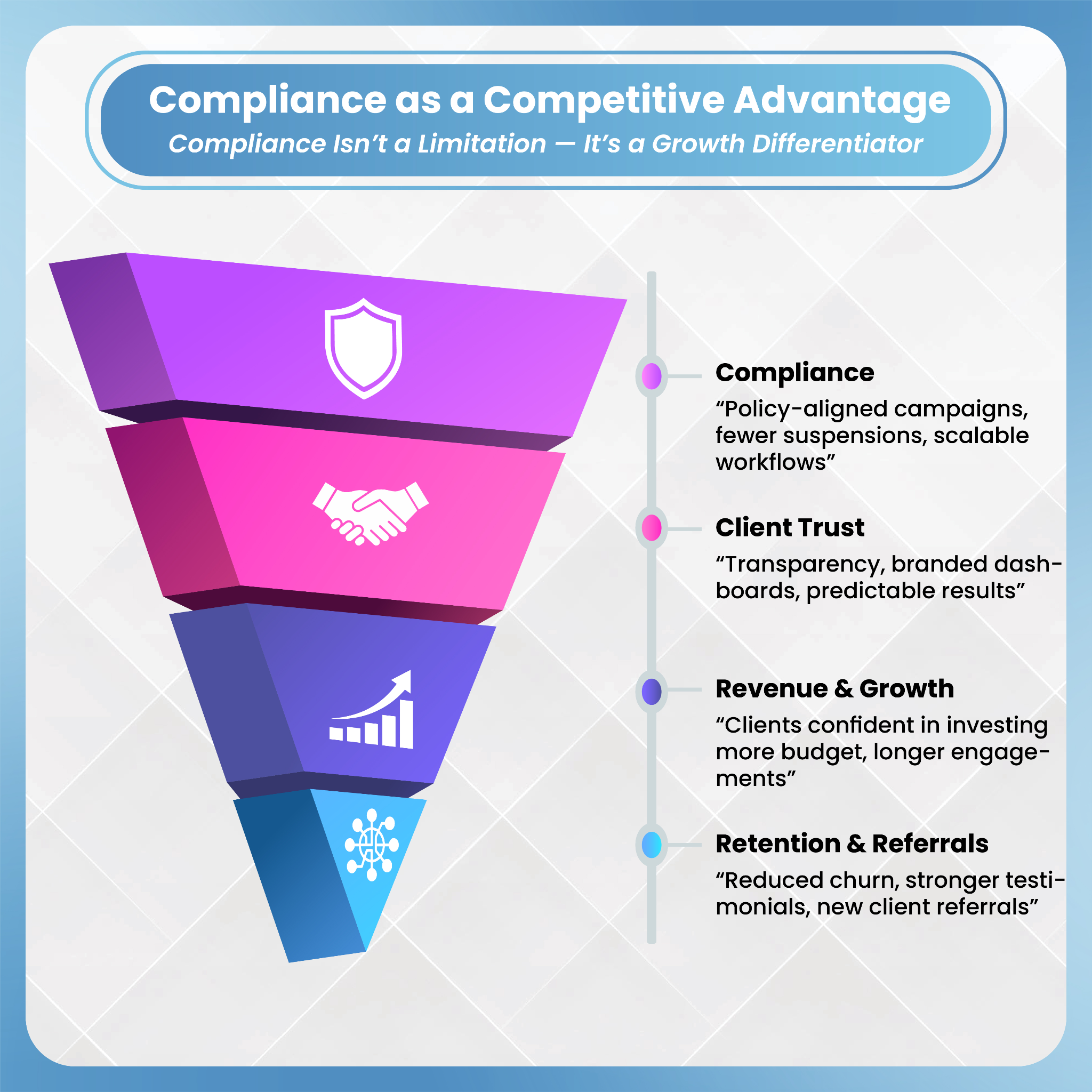
Client Education and Retention in an Automated World
Automation can dramatically increase efficiency, but it can also create distance if clients don’t understand what’s happening behind the scenes. The best agencies bridge that gap with education and proactive communication, using automation as a tool to enhance relationships, not replace them.
Automated dashboards and scheduled reports (like those in DashClicks’ InstaReports Software) give clients real-time visibility into performance, eliminating uncertainty.
However, high-retention agencies go a step further — they use those automated insights as conversation starters. Quarterly review sessions, automated satisfaction check-ins, or “data walkthroughs” ensure that clients not only see results but understand them.
When clients feel informed and included, automation becomes a sign of professionalism rather than detachment. That’s what transforms a one-time contract into a long-term partnership.
How DashClicks Helps Agencies Automate, Comply, and Scale Smarter
Automation, compliance, and technology integration can feel complex to build from scratch — but they don’t have to be. DashClicks provides the all-in-one white label platform that helps agencies deliver these systems seamlessly, under their own brand.
With DashClicks, agencies can:
- Automate Client Workflows: From lead intake and onboarding to reporting and review generation — all synced within one dashboard.
- Integrate Industry Tools Effortlessly: Connect CRMs, scheduling apps, and ad platforms to create smooth data flows across campaigns and clients.
- Stay Compliant by Design: Built-in permission management, secure data handling, and branded reporting ensure agencies meet evolving data standards.
- Deliver Transparency at Scale: Clients can log in anytime to view live results via InstaReports, building trust through continuous visibility.
- White Label Everything: Every report, dashboard, and client touchpoint carries your agency’s brand, not ours — helping you grow your reputation, not someone else’s.
DashClicks empowers agencies to stop juggling disconnected tools and start delivering structured, scalable marketing ecosystems that clients can trust. It’s not just about running campaigns — it’s about building smarter systems that grow with your agency and your clients.
The Road Ahead: Smarter, Safer, More Connected
The future of local service marketing isn’t a guessing game, it’s already taking shape in businesses that think like ecosystems. Automation provides scale, compliance establishes trust, and industry-specific tech ensures every system speaks the same language.
The next few years will reward those who combine these forces deliberately. Automation will evolve from response to prediction, anticipating client needs before they’re voiced. Compliance will move from checklists to marketing assets, proof of transparency and professionalism. And industry-specific technology will stop being optional, it’ll become the default foundation for modern credibility.
Forward-looking service brands will blend these pillars seamlessly. Imagine a contractor whose CRM alerts them when a previous client’s warranty is about to expire, sends a compliance-certified email reminder, and updates marketing reports automatically, all while the team’s on another job. That’s not futuristic; it’s next quarter. To start building this kind of intelligent system, create a “smart stack” that aligns with your growth goals. Choose one automation, one compliance safeguard, and one industry tool to integrate this quarter. The goal isn’t to adopt everything at once, but to connect what matters most for measurable, sustainable improvement.
Conclusion
The businesses winning in 2025 aren’t working harder, they’re working smarter, safer, and more connected. Automation gives them time back. Compliance earns them the credibility that keeps clients loyal. And industry-specific tech transforms everyday operations into marketing stories worth sharing.
The blueprint is clear: Automate intentionally. Comply visibly. Innovate confidently. The tools exist; the systems are proven. The only difference between those who adapt and those who disappear is the willingness to build smarter foundations, not just for marketing, but for long-term trust and growth.
The future of white-label local marketing: automate smarter, stay compliant, and grow with industry-specific tech.
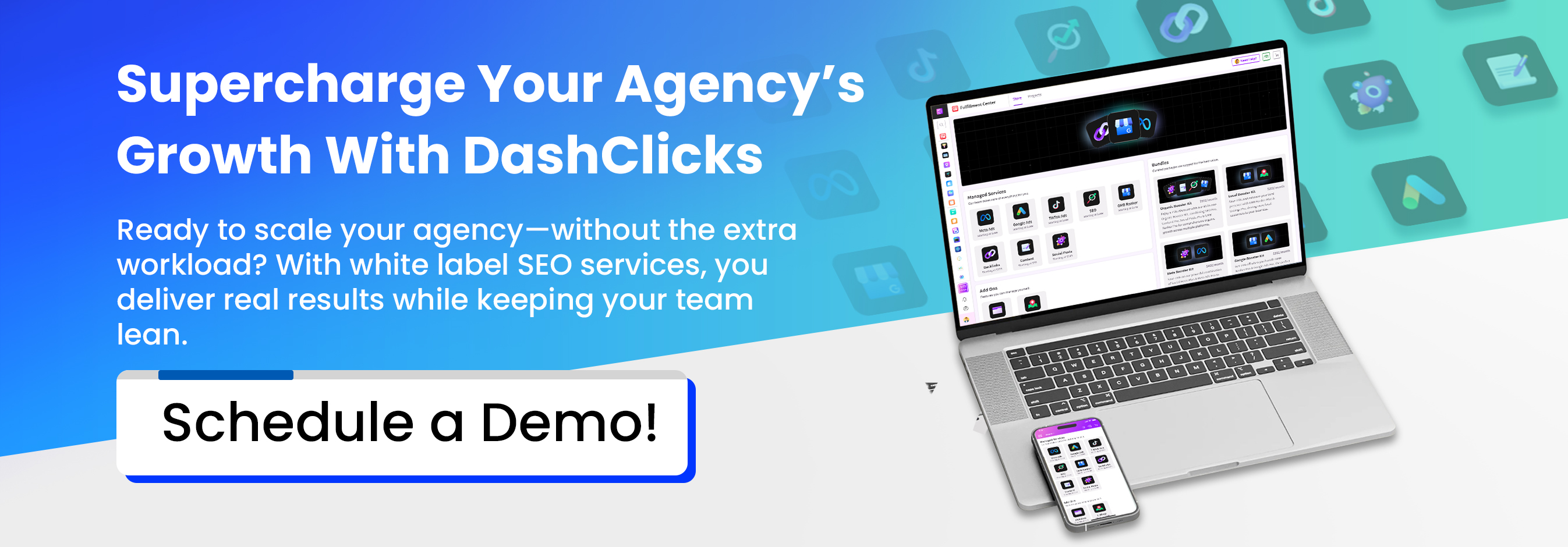
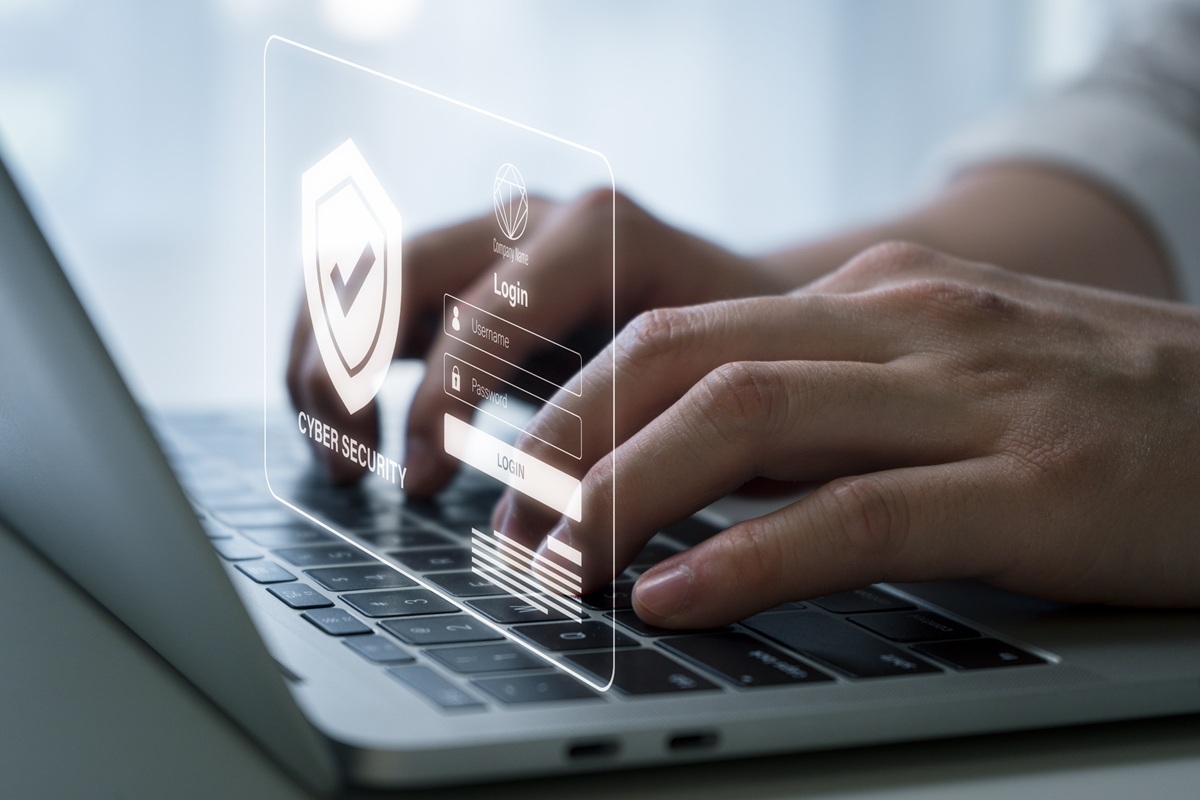
Step-by-Step SaaS Platform Security Guide for Marketing Operations
In digital marketing, speed and trust are critical to success. Agencies that activate quickly get results, and today's teams are employing scalable SaaS tools such as CRM systems and project management platforms. Automation is necessary to activate results fast.
SaaS platforms come with a significant responsibility regarding data security risks. A data breach, poorly managed access, or an unintentional mistake could make for an expensive fix. Even worse, it harms the trust you've built with your clients and threatens the agency’s brand. In fact, organizations are investing more in SaaS security because it is perceived as necessary for long-term viability rather than an expense.
A proactive, step-by-step approach to SaaS platform security will make a considerable difference for agency owners and operations managers. What could often feel like compliance is actually supporting your team’s ability to increase efficiency and effectiveness in the agency world.
Here is a framework to help your team feel secure with your SaaS ecosystem and continue running the agency effectively.
Step 1: Secure the Gate with IAM (Identity and Access Management)
The greatest point of failure in any SaaS setting is unauthorized access, largely driven by compromised credentials. IAM (Identity & Access Management) is the foundational aspect of how access is granted and to which resources.
Require Multi-Factor Authentication (MFA) Everywhere
You must mandate Multi-Factor Authentication (MFA) for all administrative, client-facing, and other sensitive applications. MFA requires two or more verification factors from users to access an application, reducing the likelihood of compromised accounts even if passwords are stolen through phishing or trust-based social engineering attacks.

Image Source: Secret Double Octopus
Pro Tip: Don't treat MFA as a once-and-done exercise. Audit your MFA flows at least once a year to verify they continue to function as intended. Treat this as a necessary administrative task.
Adopt Single Sign-On (SSO)
Single Sign-On (SSO) improves agency productivity. SSO essentially enables users to access multiple applications with a single set of credentials.
- Unified Security: SSO provides centralized control over who can access which systems.
- Reduced Friction: SSO reduces password fatigue for clients and employees alike, increases job satisfaction, and enhances productivity.
- Improved Defense: When paired with MFA, SSO continues to maintain this layered defense regarding login access, without burdening the user with initial login efficiency.
Use SSO systems, such as Scalefusion OneIdP, Okta or Azure AD, to centralize authentication for all staff and third-party partners.
Implement Least Privilege Access (LPA)
The principle of least privilege (LPA) requires that users, applications, and processes be granted only the minimum permissions necessary to execute their tasks—and nothing more. This principle prohibits lateral movement in the event of an account being compromised!
Agencies should consider role-based access control (RBAC). These permissions can be defined by agency roles (e.g., Marketing Specialist vs. Account Manager). You can use role assignments in your Project Management Software or CRM to minimize access to excessive privileges.
Conduct privilege audits to eliminate access levels for accounts that have accumulated excessive access privileges beyond their intended scope over time.
Step 2: Achieve Total Visibility of Your SaaS Stack
The scalability of cloud solutions often leads to a proliferation of applications. When employees leverage solutions on their own without going through IT, it creates what's known as Shadow IT. Their invisibility is one of the most significant security risks and creates gaps in your compliance and risk mitigation.
Keep an Exhaustive Inventory of Applications
If you can't see it, you can't secure it. Marketing teams frequently adopt freemium tools or departmental SaaS without regard to procurement, creating unauthorized data paths that may also bypass security controls.
Introduce continuous application discovery tools that can inventory all applications sanctioned for access to company data in the enterprise and all (Shadow IT or unsanctioned) applications that can access company data in the enterprise.
Use SaaS Security Posture Management (SSPM)
SSPM is the central management tool for understanding the security settings of all of your sanctioned apps (e.g., your enhanced CRM software, InstaSites, etc). It is a purpose-built toolset for understanding misconfiguration, managing permissioning, and driving compliance across your SaaS tool stack.
- Misconfiguration Discovery: Incorrectly configured settings, whether public sharing of sensitive data, relaxed sharing, or even turned off MFA, are a leading cause of breaches. SSPM continuously monitors configuration status and compares it to a set of standards. It can notify you immediately of any deviation.
- Centralized Monitoring: SSPM produces a singular dashboard for reviewing security posture, allowing security teams to measure performance over time and monitor remediations undertaken by developers and other personnel.

Image Source: CybeReady
Use SSPM to monitor applications with high-risk profiles continuously to detect any security risks or compliance gaps (e.g., validate the configuration meets HIPAA or SOC 2 compliance).
Step 3: Securing Client Data with Encryption and Compliance
Securing the sensitive client data you oversee, whether in the campaign performance metrics provided by Social Media Reports or in the CRM databases, is foundational to establishing client loyalty.
Require Data Encryption
Encryption is at the core of protecting data in the cloud. Agencies must ensure that all sensitive data is encrypted:
- At Rest: Data at rest (in other words, stored data like in databases or cloud storage) must use strong standards of encryption, such as AES-256.
- In Transit: Data that is in transit (moving through your applications/systems, and client browsers) must use TLS encryption (HTTPS).
When you build a client’s website with an external platform, ensure that they are using SSL certificate and secure hosting so that you minimize fraud and data compromises.
Continuous Monitoring for Compliance
Employee and client trust, combined with scalability, comes from your compliance with applicable global standards (e.g., SOC 2, ISO, GDPR). If organizations fail to comply with these standards, they are subject to significant financial fines and can even be forced to stop operating pending an investigation.
Regularly monitor your SaaS configurations against predefined compliance frameworks. There are SaaS security solutions that can automate your compliance monitoring process, making your audit preparation much easier and reducing the expense and employee time spent redoing manual reviews.
Step 4: Securing Automation and Integrations
SaaS environments are built to improve operational efficiency through automation, whether it be driving sales pipelines or employing third-party integration to scale tasks. However, it is important to remember that these integrations rely on APIs (Application Programming Interfaces) to bridge across systems. If APIs are not designed securely, they can be attacked, serving as an entry point and exposing sensitive information.
The main goal of API security controls is to protect the endpoints that automate data exchanges.
- Authentication & Authorization: Use the industry standards of OAuth 2.0 type connectivity processes to ensure proper token usage. If third-party apps are hijacked, we certainly do not want malicious actors to have sustained access to multiple systems.
- Rate Limiting: To avoid Denial-of-Service (DoS) attacks, ensure there is some rate-limiting applied to API communication that will enable a user to send a flurry of communication to your system prior to being considered with another legitimate request.
- Input Validation: Sanitize and validate all input parameters to avoid injection attacks (SQL injection, some common terminology), sending malicious code through the API.
Implement integration approval workflows and an ongoing auditing process for third-party apps needing API/OAuth connectivity, to review the permissions requested and confirm they are narrow as a business function.
Step 5: Operationalize Security for Continuous Improvement
Security isn't a one-off project but an iterative process. You need to integrate continuous security improvements into your operational requirements and project management workflows.
Implement Continuous Monitoring and SIEM
One of the most significant steps in protecting your platform is instituting systems that continuously monitor user activities and identify non-conforming behavior.
- Detection: Leverage technologies that incorporate user behavior analytics that can identify when an account is acting strangely, such as multiple downloads of sensitive data or logins from locations that are not the norm.
- Logging: Introduce SIEM (Security Information and Event Management) solutions that combine and analyze security logs across every system that you implement, so that suspicious conduct can be identified.
- Response: Integrate SIEM with SOAR (Security Orchestration, Automation, and Response) features to help automate responses to threats (thus drastically reducing the time it takes to remediate incidents).
Be Prepared with Incident Response Planning (IRP)
When a breach occurs, it's about speed. Your agency needs a defined security Incident Response Plan (IRP) with allocations for action roles that will help manage the event.
The incident workflow consists of:
- Identification: Confirming that an incident has occurred and identifying the type of incident and level of severity.
- Containment: Isolating systems that are affected, to eliminate the potential for spread (i.e., disabling compromised accounts temporarily).
- Eradication: Defeating the root cause of the incident, such as malware or access by unauthorized individuals.
- Recovery: Restoring systems from clean backup environments and validating the entire environment.
- Post Incident Review: Reviewing the incident to learn and improve your security posture.
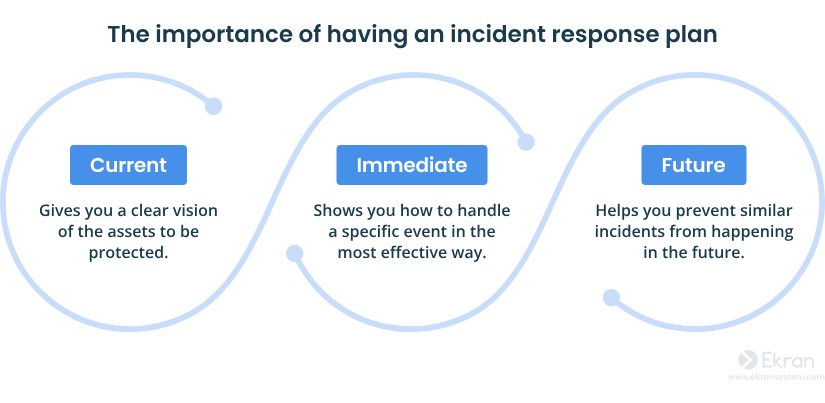
Image Source: Syteca
Champion Employee Training and Awareness
Human error remains one of the most common SaaS security risks available for attackers. Using phishing and social engineering techniques, attackers can easily exploit human errors. Even with excellent MFA implementation, it will be ineffective if employees are unaware of the latest tactics of threat actors.
Conduct regular training outlining the risks of Shadow IT and phishing. A well-informed team can be your best defense against all potential internal and external threats.
Conclusion
Protecting your SaaS platform does not mean restricting productivity; rather, it is about carefully optimizing operations and building resilience so that you can grow more, faster, and more securely. With the use of strong identity controls (MFA/SSO/LPA), centralized visibility through SSPM, and constant assessment of your automated environment, your organization reduces risk and enhances profitability.
Strong protections are your competitive advantage. Not only do they protect your clients' sensitive information, but they also maintain a compliance posture and allow you to position yourself as a trusted organization in the highly competitive space of digital marketing.
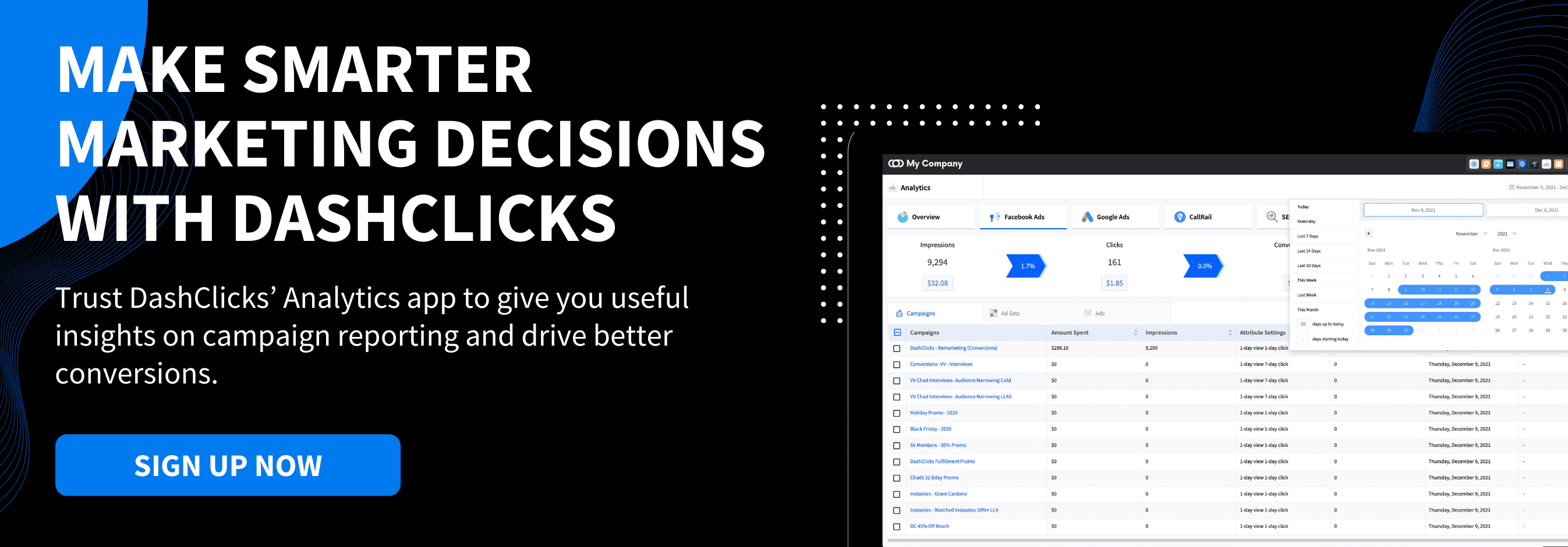
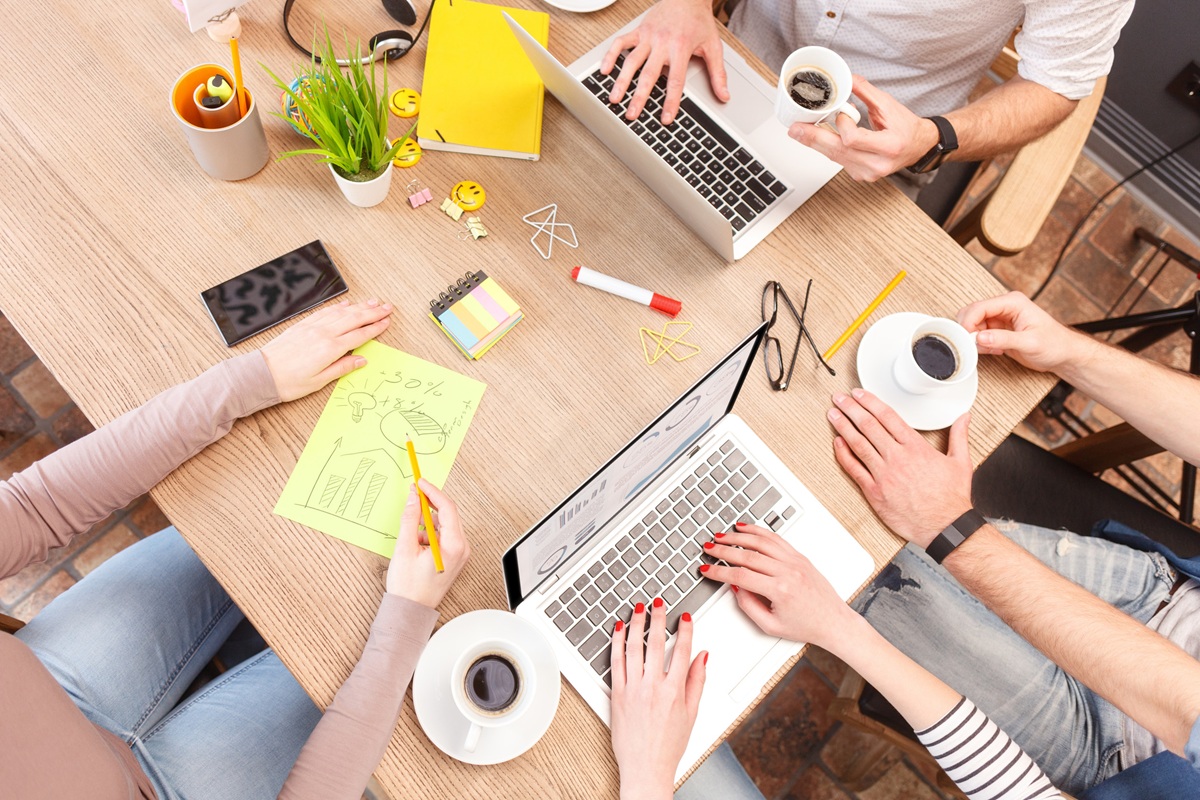
Systematize to Scale: How Marketing Teams Turn Templates Into Growth Infrastructure
Growth is the dream of every team. It brings new hope. It brings more work and more reach. It makes a brand known to more eyes and ears. But growth is not free. Growth needs care. Growth asks for order. Growth asks for a clear plan. Teams often see growth as just more work. They rush to add tasks. They rush to add staff. This rush may work for a short time. Yet in the long run, it breaks. Work gets lost. Tasks clash. Stress rises. Clients lose trust. A better way is to build order first. This means set steps. This means clear forms. This means a path that all can use. With this path, growth comes with less pain. Growth comes with less loss. Growth comes safely.
The Pain of Growth Without Order
At the start, a small team can cope. They act fast. They make calls quickly. They shift and adapt with ease. But as soon as the load grows, the cracks show. New clients bring new tasks. New tasks bring more files. More files bring more stress. Soon, the team feels lost. It is not a lack of skill that causes this loss. It is a lack of order. When there is no set flow, each staff member does work in a new way. Files get lost. Steps are skipped. Deadlines break. The sad truth is that more work does not mean more gain. More work with no plan is riskier. Teams feel stuck. Staff burn out. Clients leave. The fix is not faster. The fix is in order. When each step is set, the team can take on more. They can do it in peace. They can do it with pride.
1. Why Templates Solve Chaos?
A template may look small. But it is a strong tool. It is like a map that shows the way. It gives clear steps to use each time. When a team has a form, they do not guess. They just act. They know what comes first. They know what comes next. This saves time. It saves stress.
- A form cuts waste. It saves hours each day. It keeps work in flow.
- A form keeps the style the same. It builds trust fast. It makes work look pro.
- A form stops missed steps. It keeps work safe. It gives peace to the staff.
- A form helps new staff start quickly. It guides them well. It makes them feel safe.
- A form gives old staff ease. It frees time for big work. It lets them focus more.
Think of a brief. With a form, the brief is clear. Think of a post. With a form, the style is the same. Think of a check step. With a form, no key step is lost. This is not just about speed. It is about trust. Each client sees the same high grade. Each task looks clean. For new staff, this is gold. They can start fast. They can use the form and blend with ease. For old staff, it is a gift. They do not waste time on small things. They can focus on big work. In short, a form is more than a tool. It is the key to peace and scale.
The templates software by DashClicks helps agencies standardize and scale their workflows with ready-to-use forms for briefs, campaigns, and reporting. From client onboarding to content creation, every step can be systematized, reducing errors and saving time. Combined with its powerful integrations—including seamless communication tools—DashClicks positions itself as more than just the best email management software. It’s a complete solution that organizes your agency’s tasks, automates repetitive processes, and ensures every client interaction follows a consistent, professional standard.
2. The Power of Ready Tools
A form alone is good. But a form with a tool is great. A tool can store the forms. A tool can share them. A tool can track them in real time. This makes the workflow smooth. Each step is clear. Each file is safe. Each staff member knows what to do. For a live case, OnlyMonster is strong. It gives forms that are ready to use. These help with posts. These help with sales. These help with daily tasks. With this tool, new staff can start on day one. They do not need long guide time. They can use the set forms and join the flow. Old staff also gain from such a tool. They can cut waste. They can save time. They can trust that no step is lost. This is why tools with forms are more than nice. They are a need. They make growth safe. They make growth smooth.
3. From Form to Full System
A form is a base. But a base needs walls. A base needs a roof. In the same way, a form needs rules and flow. The flow shows who does what. It shows when each step is due. It shows how each task moves from one hand to the next. With this link, the form comes alive. Work does not stop. No one has to ask what comes next. No step is missed. A full system is made of three parts. The first is the form. The next is the rule. The last is the tool. When these parts work as one, the team runs well. They can take on more work. They can scale with less stress. This is why a form should not stand alone. It should be tied to a full path. That is when the real scale starts.
DashClicks’ Forms Software is a powerful form builder software designed for agencies that want to streamline client intake, gather data efficiently, and standardize workflows. With customizable templates, drag-and-drop fields, and seamless integration into the DashClicks platform, it makes creating, sharing, and managing forms effortless. Agencies can use it for onboarding, lead capture, project briefs, and feedback collection—all branded under their own white-label dashboard.
4. Why Scale Needs Systems
Scale is more than one task. It is more than more staff. Scale is smart work. It is clean work. When a team tries to grow with no set plan, they fail. They may hire more, but they still face chaos.
- A system sets each role. It shows clear tasks. It makes jobs fair.
- A system sets each step. It guides the flow. It keeps work on track.
- A system cuts waste. It saves key time. It stops stress for all.
- A system builds trust. It shows strong care. It makes clients stay.
- A system makes work fast. It keeps work safe. It helps staff shine.
With a system, scale feels light. The team does not burn out. They do not lose sleep. They know the work is in flow. This is what makes top teams stand out. They do not just grow in size. They grow in strength. They grow in peace.
The Human Side of Order
Work is not just tasks. It is not just files. It is people. And people need peace. When staff face chaos, they lose drive. They feel stress. They lose joy. This hurts the team. It hurts the work. When staff have a clear path, they shine. They feel safe. They know what to do. They trust the flow. This trust builds more trust. Clients see this too. They see work done on time. They see work done with the same high grade each time. This makes a bond. It takes a long time. The client stays. The team stays. Growth is not just more tasks. Growth is more peaceful for all.
Conclusion
Growth is the goal of all teams. But growth is not free. It needs care. It needs order. Without order, growth brings a loss. It brings stress. It brings missed steps. Ordered growth brings wins. It brings peace. It brings trust. The path is clear. Use forms. Link them to rules. Store them in tools. Use them each day. With set forms and dedicated tools, the team can grow safely. They can grow fast. They can grow strong. Smart teams know this truth. Scale is not just more work. The scale is more orderly. Scale is more careful. Scale is clear steps that lead to wins.


The Under-the-Radar Business Shift That Changed Everything
In the fast-paced world of business, massive pivots and bold strategies often steal the spotlight. Yet, behind many of the year’s most impressive success stories lies something quieter — a subtle adjustment, a behind-the-scenes shift, or a minor decision that creates a ripple effect of results. These moves rarely make headlines, but they often change the game in ways that even the decision-makers themselves didn’t foresee. They’re the business equivalents of hidden levers — small to the eye but capable of moving extraordinary weight.
The following insights explore how seemingly minor actions, from streamlining a communication process to rethinking customer engagement, have transformed companies. These under-the-radar business shifts come from leaders across industries who discovered that lasting success sometimes comes not from radical reinvention, but from sharpening what already exists. The lessons are both practical and inspiring, offering a blueprint for uncovering and implementing your quiet game-changers.
Identifying Efficiency Bottlenecks That Lead to Hidden Growth Opportunities:
"Sometimes, the smallest efficiency gains open doors to bigger revenue opportunities — and this was the perfect example of that." - Jessica Shee from iboysoft.com
We identified that our team was spending nearly 10 hours a week manually drafting routine supplier emails. By creating smart templates in our CRM with auto-filled data, we reduced that to under 2 hours per week. It wasn’t glamorous, but it freed up 32 productive hours a month across the team. That extra capacity allowed us to pursue two new supplier partnerships, resulting in a 14% increase in available stock for our best-selling products.
This case highlights the power of addressing time sinks that don’t seem urgent but quietly drain productivity. The key takeaway here is that efficiency improvements, no matter how small, can lead to tangible business growth. In this scenario, the reclaimed hours directly led to opportunities that boosted revenue — not through aggressive marketing or expensive campaigns, but by creating more time to act on strategic opportunities.
Streamlining Communication Channels for Faster and Clearer Workflows:
"The simplicity of the move is what shocked me the most; we didn’t invest in a big platform or overhaul our systems, yet the operational efficiency gains were undeniable." - Ryan Grambart, Founder & CEO of CopperSmith
At first, moving all communications from email to Slack seemed like a minor convenience, but it ended up revolutionizing our workflow. No more endless email chains or missed attachments — everything became searchable and accessible in one place. This change drastically reduced internal meeting times because people could resolve issues in real time. Within three months, client satisfaction scores improved by 18% and project turnaround times dropped by 25%.
The lesson here is that the right communication tool can drastically alter how your business operates without requiring a huge investment. The shift was minimal in cost and disruption, but it created a culture where answers were quicker, collaboration was smoother, and operational speed improved dramatically. Sometimes, the move that feels “too small to matter” is exactly what untangles hidden inefficiencies.

DashClicks’ conversation software brings all client and team communications into one unified inbox. From SMS and email to chat and social messages, agencies can manage every conversation in real time under their own brand. This centralized system reduces back-and-forth, boosts response times, and helps agencies deliver a seamless client experience.
Creating Uninterrupted Focus Time for Deep Work and Creativity:
"It’s a zero-cost change that gives back hours of mental space, which in turn drives better-quality output." - Sam wood, Marketing Head at Upholstery fabric
This started as an experiment to reduce burnout, but it became one of the best productivity moves of the year. By keeping Fridays free of meetings, our team had uninterrupted blocks of time to focus on deep work, creative thinking, and project wrap-ups. Clients also appreciated that we were more responsive earlier in the week. Over six months, we saw a 22% increase in completed projects before deadlines, and employee satisfaction surveys showed a significant drop in stress levels.
Deep work is often undervalued in modern business settings where constant communication can fragment focus. Setting aside even one day free from meetings can lead to higher output, better creativity, and improved morale. The change didn’t require budget approval or new hires — just the discipline to protect a slice of the calendar.
Using Small Personal Touches to Build Customer Loyalty and Brand Identity:
"The unexpected result was how it boosted staff morale, too — our team loved being part of something so personal and impactful." - Jack Parrish, Founder of Parrish Aviation
We decided to send a 15-second personalized thank-you video to every online customer, recorded by our customer service team. It seemed like a small gesture, but the human connection it created was powerful. Customers shared these videos on social media, generating organic brand exposure without any ad spend. Repeat purchases from video recipients increased by 31%, and our referral rate doubled in two months.
What stands out here is that this move cost virtually nothing but had a double impact — customers felt more connected to the brand, and employees felt more engaged. A single small change in customer communication can have lasting brand implications, proving that loyalty often stems from personal, human moments rather than transactional perks.

Turning Failures into Learning Tools for Long-Term Success:
"By normalizing conversations around failure, we made people less afraid to take calculated risks, which ironically led to more innovation." - Cameron Anderson from All Kind Gas & Plumbing
Instead of quietly shelving failed projects, we began creating short, structured write-ups explaining what went wrong, what we learned, and how we’d avoid repeating the mistake. Within six months, we saw a 19% decrease in repeated errors and a noticeable improvement in project efficiency.
Turning mistakes into shared learning moments transforms company culture. This approach reduces fear, encourages calculated risk-taking, and improves decision-making over time. It’s not about celebrating failure for its own sake — it’s about building a knowledge base that prevents repeat missteps and accelerates improvement.
Cross-Training Teams to Improve Collaboration and Uncover Hidden Talents:
"It also helped us uncover hidden talents — one of our delivery drivers is now creating some of our most engaging social media content." - Emily Peterson, CEO of Saranoni
Once a month, we have bakers work in customer service, cashiers spend time in production, and delivery staff join the marketing team. This cross-training was initially meant to help cover absences, but it also deepened mutual respect among employees and improved problem-solving. Customer complaints dropped by 15% because staff could answer product questions more accurately.
Cross-training isn’t just about coverage — it’s a way to foster empathy and unlock unexpected skills. The added benefit of talent discovery can open new opportunities for internal growth and innovation.
Building Company-Wide Connection Through Consistent Leadership Communication:
"The act of communicating consistently, without a formal meeting, has made everyone feel like they have a front-row seat to the company’s direction." - Alex Constantinou - MD at The Fitness Circle
Every Friday, I send a short email to the whole company outlining key wins, upcoming challenges, and one personal thought about leadership or growth. It only takes 20 minutes, but it has transformed how connected people feel to the business. Engagement in company-wide initiatives jumped by 40%, and alignment with our mission improved.
Regular, informal communication from leadership builds trust and unity. Even small, consistent gestures can help employees feel informed and valued without the overhead of more meetings.
Making Intentional Lifestyle Changes That Positively Impact Business Performance:
"Not only did these 3 small changes have a significant impact on the business but they made a huge impact on my personal fulfillment as a business owner." - Sabine Ghali, Managing Director at Buttonwood Property Management
Three intentional actions reshaped both personal and professional success:
- Starting each day with meditation and visualization.
- Saying no to work that didn’t align with the company mission.
- Offering surprise gestures to delight clients and staff.
These changes proved that a healthier mindset and values-based decision-making directly influence business outcomes. Sometimes, the first shift needs to happen in the business owner’s own habits.
Automating Repetitive Marketing Tasks to Unlock New Opportunities:
"That small change improved our response rate and turned PR into our most predictable source of killer backlinks." - Leury Pichardo , Director of Marketing at Digital Ceuticals
HARO queries once consumed hours every week with little return. By automating the process via Zapier to identify relevant opportunities and instantly assign them to the right team member, the workflow became seamless and high-return. Instead of scrambling, the team now works from a prioritized list.
Automation frees brainpower for higher-value work. This example shows that even modest automations can transform an unpredictable process into a reliable growth engine.

With DashClicks, agencies can automate repetitive marketing tasks like reporting, SEO tracking, and client communications. By removing manual busywork, your team can focus on strategy, growth, and delivering more value to clients—without adding overhead.
Networking Strategically for Short-Term Wins and Long-Term Positioning:
"By creating win-win deals that add value to both sides, I’ve been able to generate short-term wins while the long-term marketing strategy continues to grow." - Danyon Togia, Founder of Expert SEO
Instead of waiting for SEO results alone, networking with complementary businesses created short-term revenue boosts and built long-term partnerships. These relationships generated leads faster while strengthening the broader marketing strategy.
Strategic networking is often underestimated. Done right, it can create a self-reinforcing cycle of referrals, co-marketing, and resource sharing.
Focusing on Existing Audiences to Generate More Revenue Without New Spending:
"Sometimes, the gold’s already in your backyard." - Udemezue John, Maildrip.io
Rather than chasing new platforms, doubling down on the existing email list through consistent, value-driven communication led to more repeat sales than any ad campaign. This low-cost approach maximized the return on an asset the business already owned.
It’s a reminder that growth doesn’t always require expansion outward; sometimes, the most efficient path is deepening engagement with the customers you already have.
Investing in Sustainable Growth Strategies That Outlast Trends:
"It took longer to see results, but now I’ve got a steady flow of leads without constantly hustling for the next one." - Lisa Martinez, Founder of TX Cash Home Buyers
While competitors focused on quick wins like ads, investing in SEO built a long-term lead pipeline that now supports other marketing channels. The steady influx of leads reduced the pressure to constantly chase new prospects.
Sustainable strategies may require patience, but they provide a foundation that supports future initiatives without constant reinvestment.
Shifting Client Conversations Through Real-Time Performance Tracking:
"When clients can see exactly how each channel is performing in real time, it changes the conversation from what are we spending to how can we scale this." - Forrest Webber, owner of the Tradesmen Agency
By building custom dashboards showing key performance metrics, clients could instantly see ROI from various channels. This clarity made scaling decisions easier and helped generate over $20 million in digital leads.
Transparency not only builds trust, it shifts the entire tone of client relationships from defensive budget discussions to proactive growth planning.
Conclusion
The most underrated business shifts are often those hiding in plain sight — changes that take minutes to implement, cost little to nothing, and yet fundamentally alter how a company operates. Whether it’s a tool switch, a new habit, or a reframing of failure, these actions create space for growth by removing friction, deepening relationships, and uncovering hidden potential.
What unites these examples is not their size, but their leverage. Small hinges can swing big doors, and in business, sometimes the smallest hinge of all is simply seeing the opportunity to act differently today. The question isn’t whether you have the capacity to make a bold move — it’s whether you’re paying attention to the quiet ones that could change everything.


Essential Strategies for Effective Deadline Management in Agencies
Deadlines are the backbone of agency life. Whether you're handling campaigns, creating designs, managing client deliverables, or juggling multiple projects, meeting deadlines is critical for client satisfaction and business growth. Yet, we’ve all struggled with them at some point. In fact, studies show that 37% of projects fail due to missed deadlines, and 56% of teams say communication is their biggest challenge.
This blog dives into actionable tips to help agencies manage deadlines effectively, keep projects on track, and turn time pressure into a productivity driver.
By the end of this article, you’ll learn:
- Why deadlines can feel unrealistic and how to solve this.
- What to do when your agency misses a deadline.
- The most common reasons for missed deadlines (and how to avoid them).
- Proven strategies to stay ahead of multiple projects and tight deadlines.
Why Do We All Struggle To Set Realistic Deadlines?
Setting realistic deadlines can feel like walking a tightrope. Clients expect fast turnaround times, creative teams crave enough time to innovate, and project managers strive to balance both. In fact, time constraints are one of the top challenges for an agency.

Image Source: AgencyAnalytics
But why is it so hard to get it right?
Common pitfalls of unrealistic deadlines:
- Over-Promising to Clients: Agencies often underestimate the complexity of tasks in a bid to win clients or maintain satisfaction.
- Poor Time Estimations: Creative processes aren’t always linear, so it’s common to misjudge how long a project might take.
- Lack of Team Consultation: Deadlines set without input from the team often don’t account for their existing workload or unforeseen roadblocks.
Solution: To set realistic deadlines, involve every stakeholder in the timeline planning process. Use a project management tool like DashClicks to visualize tasks, timelines, and potential bottlenecks. By mapping out each stage, you can build more accurate projections.
What To Do If Your Agency Misses A Deadline?
Despite the best planning, missing a deadline is a reality every agency might face. How you handle it can make all the difference.
1. Communicate Proactively
If you realize you won’t meet the deadline, notify the client immediately. Open client communication is crucial to maintaining trust and managing expectations. Be transparent about the reasons for the delay, showing that you value their time and project. Always provide an updated timeline and ensure it’s realistic to avoid further setbacks. This approach not only helps mitigate frustration but also demonstrates professionalism.
Example: Instead of saying, "We’re running late," explain, "We encountered unexpected feedback changes in the draft stage. To ensure quality and meet your expectations, we’ll need two additional days to finalize the project. We appreciate your patience and understanding."
2. Offer a Solution
When a deadline is missed, taking responsibility is only part of the equation—offering a solution is equally important. Think about how you can recover lost trust and show the client that their project remains a priority. This could include reallocating resources to expedite completion, providing an enhanced final deliverable that exceeds their expectations, or offering a discount or added bonus for the inconvenience. By taking ownership and showing commitment to resolving the issue, you can turn a negative situation into an opportunity to strengthen the agency-client relationship.
3. Review What Went Wrong
After the project is completed, conduct a thorough post-mortem with your team to analyze what led to the missed deadline. Was it poor time estimation, insufficient resources, lack of communication, or unforeseen issues? Identify whether the delay was avoidable and discuss actionable lessons to prevent a recurrence. Consider updating your workflow, refining your project management software, or improving communication protocols. Learning from the experience will not only help your team grow but also position you as a more reliable partner for future projects.
Top 4 Reasons Why Agencies Miss Deadlines
Understanding and addressing the root causes of missed deadlines is essential. Here are the four most common culprits:
1. Scope Creep
Adding extra tasks, revisions, or requests outside the original project scope can quickly derail timelines and overextend resources. This often occurs when project terms and deliverables aren't clearly defined at the outset or when clients keep requesting "just one more thing." Over time, these small additions can snowball into significant deviations from the original plan.
Solution:
- Use detailed contracts and proposals to define deliverables and expectations upfront. Clearly outline what is included in the scope and what isn't.
- Regularly review the agreed-upon scope with the client to ensure alignment.
- Politely but firmly enforce change requests as additional paid work rather than letting scope creep consume your time and resources without compensation. Adjust timelines or budgets accordingly to accommodate changes.
2. Miscommunication
Breakdowns in communication between clients and teams often lead to misunderstandings about expectations, deliverables, or deadlines. Miscommunication can result from unclear instructions, assumptions, or even a lack of regular check-ins, leaving both parties frustrated.
Solution:
- Set clear milestones and checkpoints throughout the project to ensure everyone is on the same page. Use these moments to confirm progress and address any concerns.
- Use dedicated communication tool like DashClicks to centralize discussions, track progress, and keep all parties accountable.
- Foster a culture of clarity by encouraging team members and clients to ask questions or request clarification whenever needed.
3. Underestimating Workloads
Agencies frequently miscalculate how much time, effort, and resources a project truly requires, leading to rushed deadlines, stressed employees, and lower-quality outcomes. This often stems from overly optimistic planning or failing to account for unexpected delays.
Solution:
- Build "buffer time" into every project timeline to account for potential delays, client feedback, and unexpected challenges.
- Use past project data to create more accurate estimates for time and resource allocation.
- Regularly review timelines during the project and adjust deliverables or deadlines as necessary to ensure quality isn’t compromised.

Image Source: TimeTrack
4. Burnout Among Team Members
Overloading teams with unrealistic deadlines, excessive workloads, and constant pressure can lead to burnout. This not only reduces individual productivity and morale but can also result in higher turnover rates and a decline in overall team performance.
Solution:
- Track employee workloads carefully to ensure tasks are evenly distributed and realistic to complete within the given timeframes.
- Encourage open communication so team members can voice if they feel overburdened.
- If a team member is overwhelmed, redistribute tasks within the team or consider outsourcing to freelancers or contractors to lighten the load.
- Promote a healthy work-life balance by setting boundaries for work hours and encouraging regular breaks to maintain long-term productivity and team well-being.
Proven Strategies for Managing Multiple Projects and Tight Deadlines
With the right strategies, managing multiple deadlines doesn’t have to be overwhelming. By using effective tools and techniques, you can take the stress out of meeting deadlines and boost your team’s productivity. Here’s how you can streamline your workflow:
1. Prioritize Tasks
The first step to effectively managing deadlines is understanding the difference between "urgent" and "important" tasks. Not every task requires immediate attention, and learning to prioritize ensures your team focuses on what truly matters. Start each day by sorting your team’s to-do list based on priority levels, ensuring the most critical tasks get addressed first.
Example Approach: Use Eisenhower’s Matrix to categorize tasks based on urgency and importance:
- Important & Urgent → Do immediately
- Important & Not Urgent → Schedule for later
- Not Important & Urgent → Delegate
- Not Important & Not Urgent → Eliminate

Image Source: Spica
This method helps eliminate the guesswork and prevents wasting time on tasks that don’t contribute to your overall goals.
2. Leverage Automation
Repetitive manual tasks can eat away at your team’s time, leaving less bandwidth for creative problem-solving and high-priority projects. Automation platform like DashClicks can handle routine activities such as sending follow-ups, scheduling meetings, or updating task statuses. For instance, you can set up a workflow to send automatic reminders for deadlines or trigger alerts when tasks are completed.
By automating these small but time-consuming tasks, your team can focus on strategic work that moves the needle. Plus, automation reduces errors caused by manual entry, adding another layer of efficiency.

3. Time Tracking
Understanding how long tasks actually take is key to setting realistic deadlines. Use tools like Toggl, Traqq or Clockify to measure how much time your team spends on various projects. Over time, this data will improve your ability to accurately estimate timelines, allocate resources, and prevent bottlenecks.
For example, if a specific task consistently takes longer than expected, you can adjust your timelines or provide additional support to avoid unnecessary stress. Time tracking also creates transparency for clients, as you can clearly show how their projects are progressing.
4. Break Projects into Milestones
Large projects can feel overwhelming, but breaking them into smaller, manageable milestones makes them more approachable. Each milestone serves as a micro-deadline, allowing you to measure progress incrementally and make adjustments as needed.
For example, if you're launching a new product, divide the project into phases like market research, design, prototyping, and final production. Completing each phase feels like an achievement, boosting team morale and maintaining momentum. Don’t forget to celebrate these milestones—it’s a simple way to keep the energy high and recognize your team’s hard work.
5. Encourage Collaboration
Deadlines often involve multiple team members working together. Encourage open communication and collaboration by using tools like DashClicks Inbox software or Google Workspace. Set up regular check-ins to ensure everyone is aligned and address any roadblocks early. A collaborative environment fosters accountability, builds trust, and ensures no task falls through the cracks.
6. Minimize Multitasking for Efficiency
Multitasking might seem like a productivity booster, but it often leads to decreased focus and mistakes. Encourage your team to dedicate their attention to one task at a time by prioritizing their workload and tackling high-impact items first.

Image Source: Focuswise
Using tools like task managers or project boards can help clarify responsibilities and timelines, reducing the temptation to juggle multiple assignments. When the focus is sharp, output quality improves, and deadlines are met with confidence and precision.
7. Delegate Tasks Effectively
Delegation isn't just about offloading work—it’s about building trust, empowering others, and optimizing team efficiency. Assign tasks to the right people based on their strengths and expertise, ensuring that they are set up for success. Be clear about expectations, deadlines, and outcomes to avoid miscommunication.
Remember, effective delegation not only lightens your workload but also fosters growth and accountability within your team. The result? A more driven, engaged, and productive group ready to tackle challenges head-on!
8. Review and Reflect Regularly
Taking the time to review and reflect is essential for continuous improvement and progress. Regularly assess your team’s performance, celebrate wins, and identify areas for growth. Be proactive in gathering feedback from team members—what’s working? What could be better? Use this insight to refine strategies, enhance agency workflows, and ensure everyone stays aligned with your goals. Reflection isn’t about dwelling on mistakes; it’s about learning, evolving, and driving future success. Make it a habit, and watch your team soar to new heights!
Streamline Your Agency’s Workflow and Meet Every Deadline With DashClicks
Meeting deadlines consistently can be a challenge for agencies, but that’s where DashClicks comes in to revolutionize your operations. Our suite of powerful software solutions is designed to streamline workflows, boost productivity, and help your team deliver on time, every single time. Whether you’re managing multiple projects or struggling to stay ahead of timelines, DashClicks provides the tools you need to stay organized, efficient, and focused.
DashClicks’ Services and Software:
- Projects: This intuitive project management tool allows you to assign tasks, set priorities, and track progress in real time. With everything in one place, your team stays on the same page, preventing delays and confusion.
- Analytics: Need insights at the snap of a finger? Our advanced analytics platform provides detailed performance data that helps you make informed decisions, ensuring you allocate your time and resources wisely.
- Inbound: Effortlessly manage leads with our CRM, keeping communication flowing and ensuring no opportunities or follow-ups slip through the cracks.
- Content & Website Services: From white-label website builds to SEO content, our services save you time while delivering exceptional quality, helping you meet client deadlines with zero compromise.
- Fulfillment Dashboard: Overwhelmed by fulfillment? Our all-in-one dashboard allows you to monitor and manage deliverables with real-time updates, ensuring projects are completed on schedule.
With DashClicks at your side, your agency can scale faster, eliminate bottlenecks, and consistently delight clients with on-time results. Take control of your deadlines—start leveraging DashClicks today!
Turn Deadlines Into a Lifeline
Deadlines don’t have to feel like the enemy. When managed effectively, they become motivators that drive focus, creativity, and results. By mastering deadline management, your agency can keep clients happy, foster a productive workplace, and gain a competitive edge.
Remember, tools can work wonders for maintaining deadlines. Platform like DashClicks provide excellent tracking solutions and offers detailed analytics on project timeframes. Combine these tools with strategies like better task prioritization, automation, and milestone planning to transform how your team works.
Additionally, don’t underestimate the importance of mindset. A positive approach to deadlines can help shift your team’s perspective, turning them into opportunities rather than obstacles. By viewing deadlines as motivators, you can foster a culture of efficiency and innovation.
Are you ready to take control of your deadlines? Start implementing these strategies today and notice the difference in how your projects flow. With the right mindset, tools, and processes, you’ll not only meet your deadlines—you’ll beat them, every time.


No results found.
Please try different keywords.
Get Started with
DashClicks Today
Get found online, convert leads faster, generate more revenue, and improve your reputation with our all-in-one platform.
.svg)
Unlimited Sub-Accounts
.svg)
Unlimited Users
.svg)
All Apps
.svg)
All Features
.svg)
White-Labeled
.svg)
Active Community
.svg)
Mobile App
.svg)
Live Support
.svg)
100+ Tutorials
.svg)
Unlimited Sub-Accounts
.svg)
Unlimited Users
.svg)
All Apps
.svg)
All Features
.svg)
White-Labeled
.svg)
Active Community
.svg)
Mobile App
.svg)
Live Support
.svg)
100+ Tutorials
.svg)
Unlimited Sub-Accounts
.svg)
Unlimited Users
.svg)
All Apps
.svg)
All Features
.svg)
White-Labeled
.svg)
Active Community
.svg)
Mobile App
.svg)
Live Support
.svg)
100+ Tutorials



.svg)
.svg)
.svg)
.svg)
.svg)


